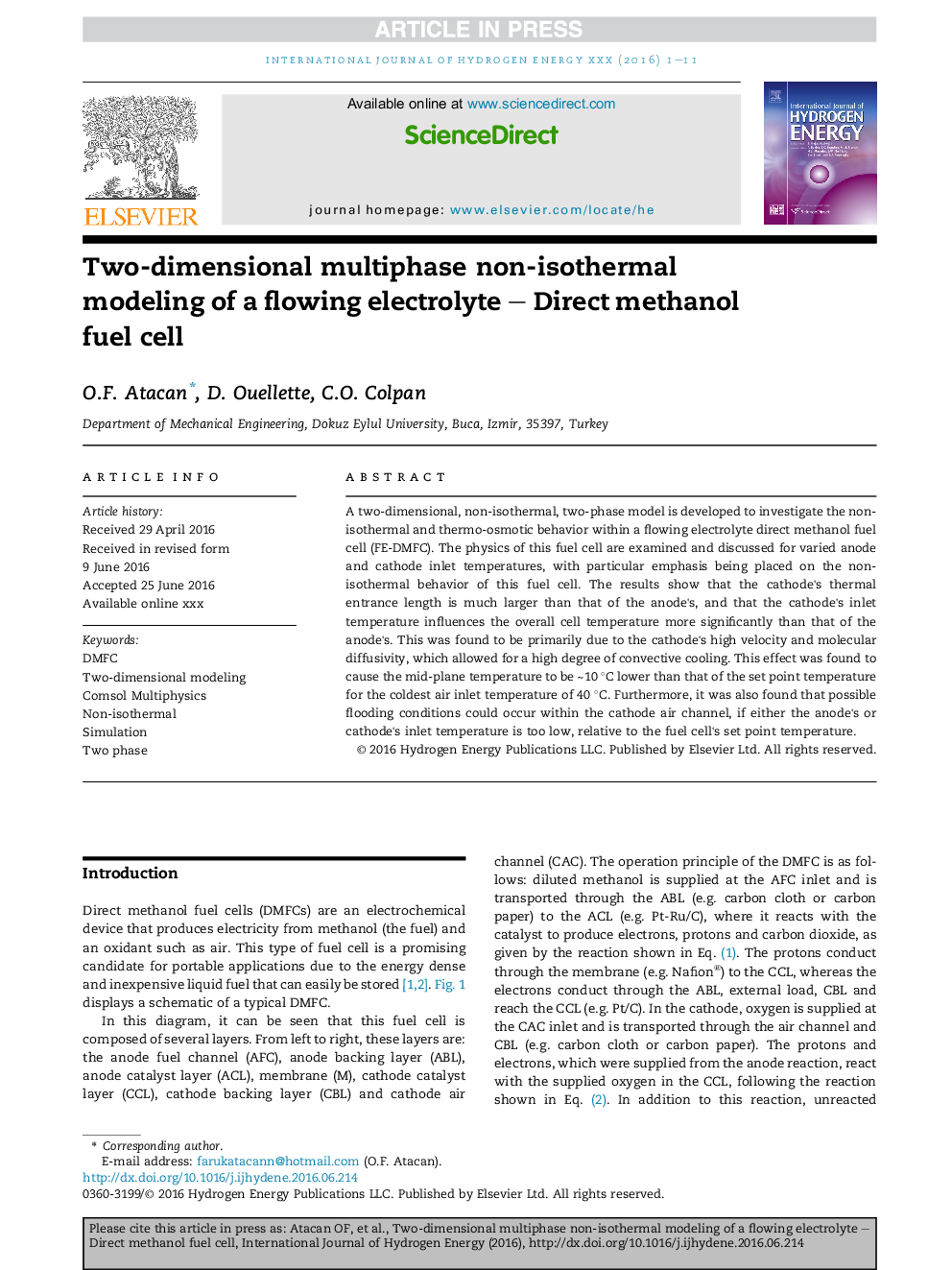| Article ID | Journal | Published Year | Pages | File Type |
|---|---|---|---|---|
| 5146564 | International Journal of Hydrogen Energy | 2017 | 11 Pages |
Abstract
A two-dimensional, non-isothermal, two-phase model is developed to investigate the non-isothermal and thermo-osmotic behavior within a flowing electrolyte direct methanol fuel cell (FE-DMFC). The physics of this fuel cell are examined and discussed for varied anode and cathode inlet temperatures, with particular emphasis being placed on the non-isothermal behavior of this fuel cell. The results show that the cathode's thermal entrance length is much larger than that of the anode's, and that the cathode's inlet temperature influences the overall cell temperature more significantly than that of the anode's. This was found to be primarily due to the cathode's high velocity and molecular diffusivity, which allowed for a high degree of convective cooling. This effect was found to cause the mid-plane temperature to be â¼10 °C lower than that of the set point temperature for the coldest air inlet temperature of 40 °C. Furthermore, it was also found that possible flooding conditions could occur within the cathode air channel, if either the anode's or cathode's inlet temperature is too low, relative to the fuel cell's set point temperature.
Related Topics
Physical Sciences and Engineering
Chemistry
Electrochemistry
Authors
O.F. Atacan, D. Ouellette, C.O. Colpan,
